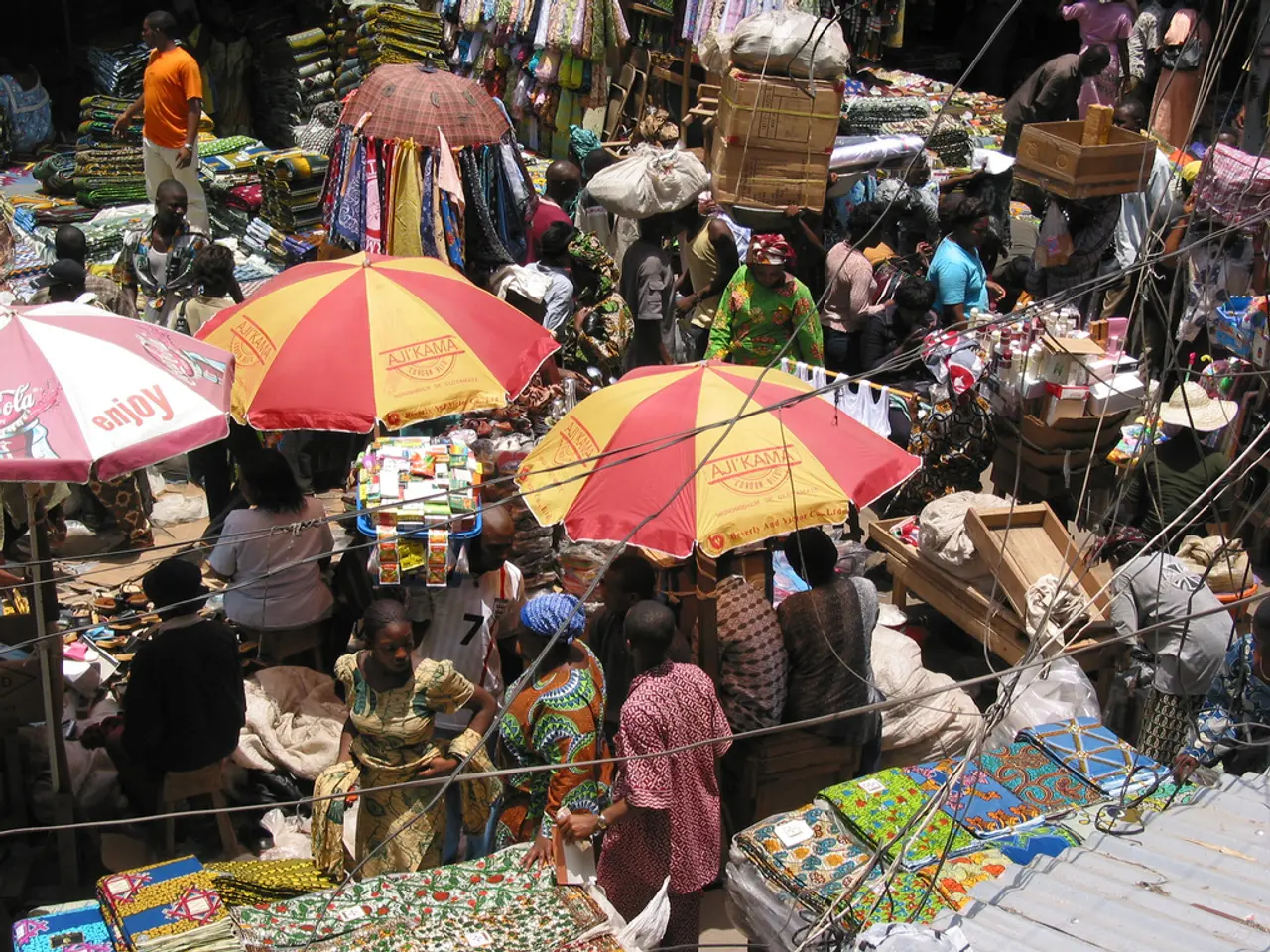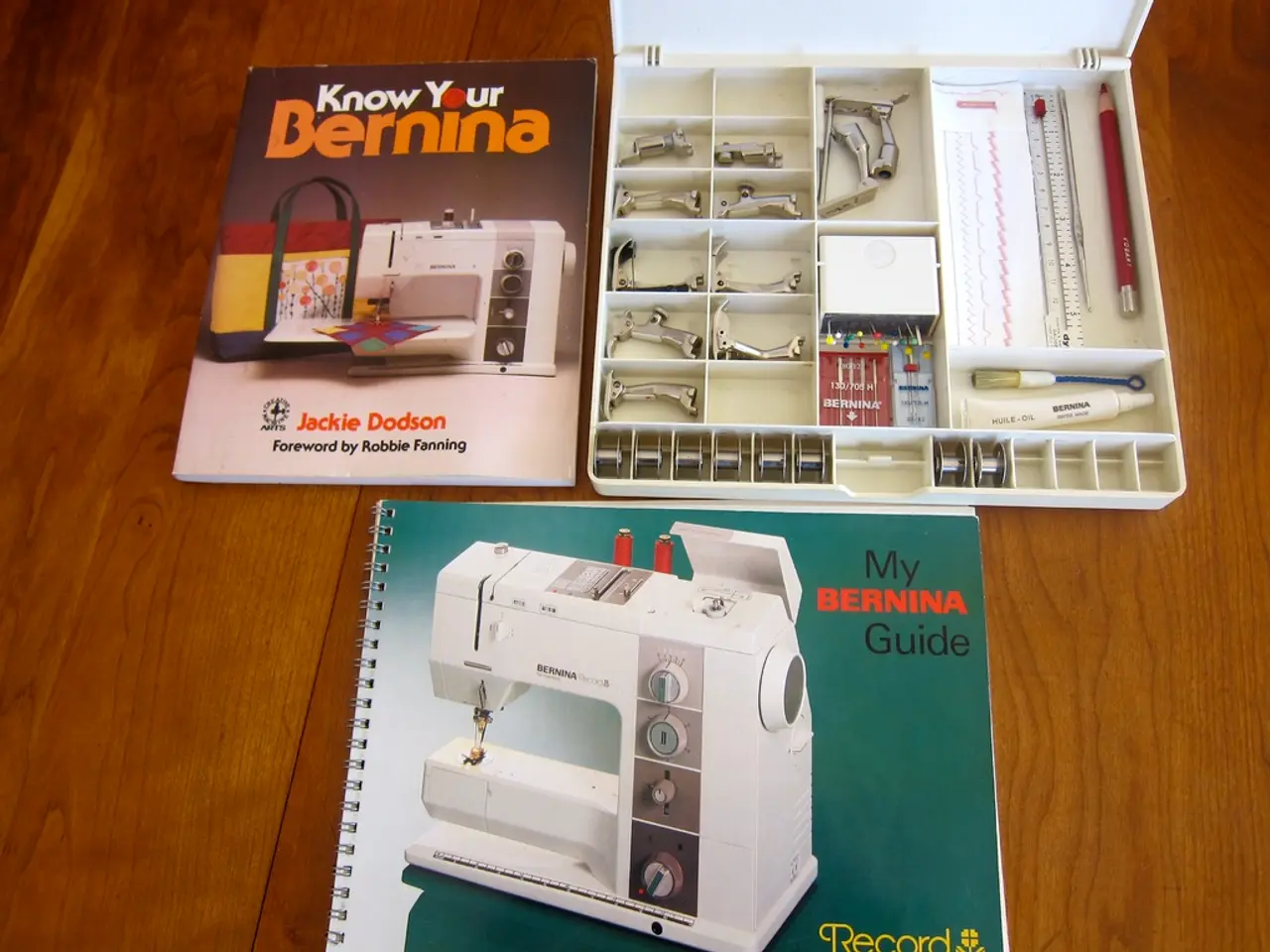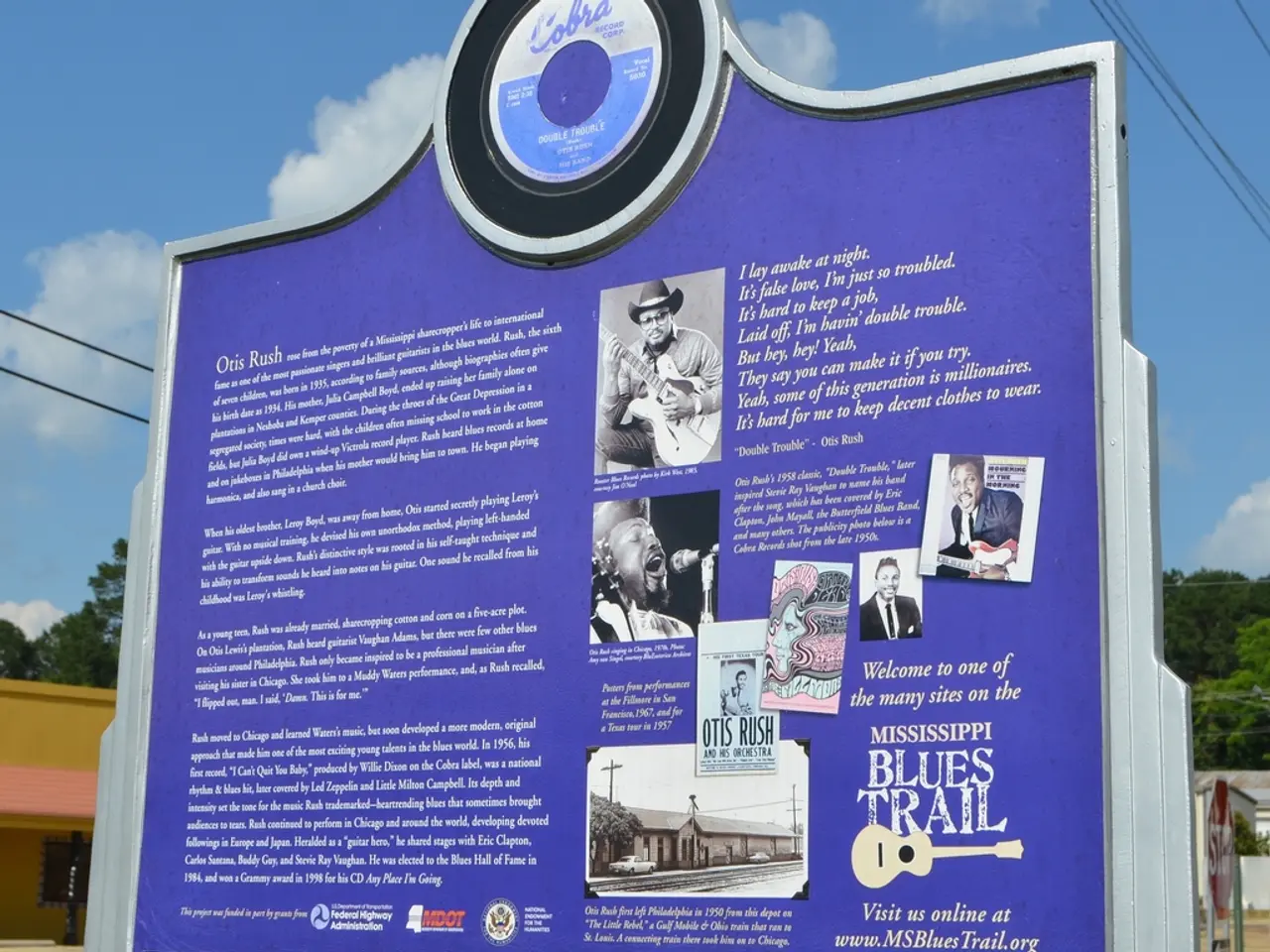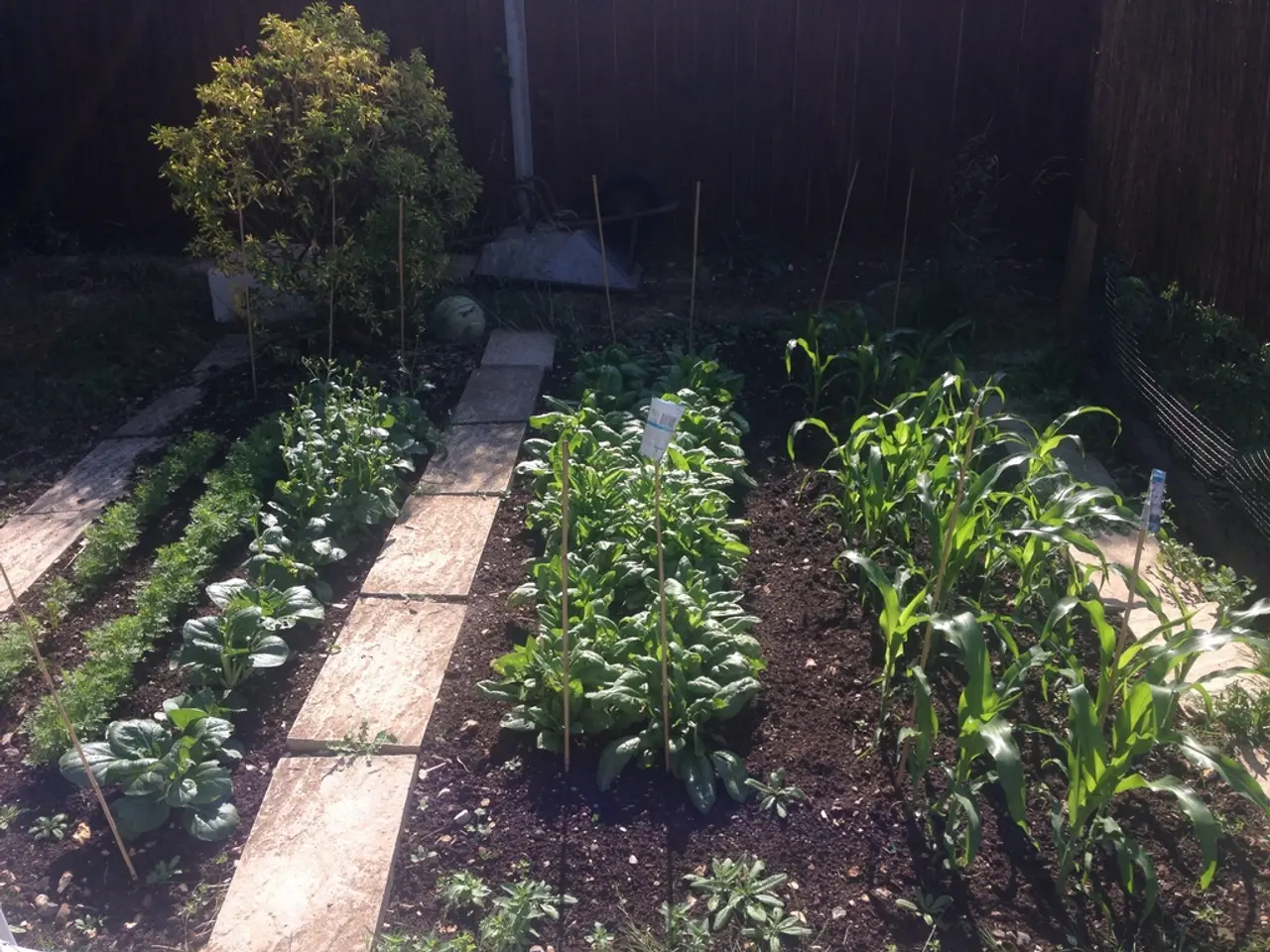Solo Miner's Triumph: pocketing a $350,000 Bitcoin Windfall Against All Odds
In a surprising turn of events, a solo Bitcoin miner managed to successfully mine a block on July 3, 2025, earning a reward of approximately 3.173 BTC (around $349,028). This victory, however, comes with long odds, as the miner's hash rate of 2.3 petahashes per second (PH/s) represents just 0.00026% of the total estimated network hashrate of 881 exahashes per second (EH/s).
The odds of a solo miner like this one winning a block are extremely low, with an expert estimating that the miner has about a 1 in 2,800 chance of solving a block every day, or once every 8 years on average. This is in stark contrast to larger mining pools, which have a much higher probability of finding a block due to their combined computational power.
For instance, Foundry USA, an American-based mining pool, has been rewarded with a staggering 304,576 BTC ($32.8 billion) throughout its history. The hash rate of Foundry USA is 271.7 EH/s, which is approximately 31% of the total network hashrate. This massive gap in hash rate power explains why large pools dominate block mining, as their combined computational power dramatically increases the odds of finding a block.
Solo mining, while it can lead to rare big wins, is a challenging endeavour. The miner in question used Solo CK, a non-profit service for Bitcoin mining, to avoid the overhead required to run a high-end mining rig. However, the fees for solo mining are high, with the solo miner in this case paying a 2% fee to use Solo CK.
This case serves as a reminder of the competitive nature of Bitcoin mining, which has evolved from individual miners to industrial-scale operations. Today, companies use warehouses of ASIC machines to compete for mining rewards. Bitcoin miners solve complex mathematical equations to find a "nonce" that meets the block's difficulty requirement and allows it to be added to the blockchain, underpinning the proof-of-work consensus mechanism.
Most solo miners join mining pools to combine participants' power and split rewards, as the odds of winning a block as a solo miner are incredibly low. The success of this solo miner, while significant, underscores the long odds faced by those who choose to mine Bitcoin alone.
| Metric | Solo Miner Example | Major Mining Pool (Foundry USA) | Total Network | |--------|--------------------|-------------------------------|---------------| | Hash Rate | 2.3 PH/s (0.00026%) | 271.7 EH/s (approx. 31% of network) | 881 EH/s | | Daily Block Winning Chance | ~0.004% (1 in 2,800) | Significantly higher due to larger share | 100% (network collectively) | | Average Time Between Wins | ~8 years | Much shorter (days/hours depending on pool size) | Every 10 minutes (one block) |
In conclusion, while solo mining can lead to rare big wins, the probability is extremely low compared to larger mining pools, which pool their hashing power to increase the frequency of winning blocks. For the average Bitcoin miner, joining a mining pool is likely the most viable and efficient way to participate in the mining process.
- Despite the solo miner's successful block retrieval, the odds of finding another block are astronomically low, with the miner having a mere 0.004% chance daily or approximately every 8 years, in stark contrast to larger mining pools like Foundry USA, which have a significantly higher probability due to their combined computational power.
- The solo miner in question used a non-profit service, Solo CK, to avoid the overhead of running a high-end mining rig but paid a high fee of 2%, emphasizing the challenging nature of solo mining.
- Large mining pools, such as Foundry USA, have reaped substantial rewards throughout their history, with Foundry USA alone amassing 304,576 BTC ($32.8 billion).
- Bitcoin mining has transitioned from individual miners to industrial-scale operations, with companies utilizing warehouses of ASIC machines to compete for mining rewards.
- As illustrated by the solo miner's success, the proof-of-work consensus mechanism relies on miners solving complex mathematical equations to find a "nonce" that matches the block's difficulty requirement, allowing it to be added to the blockchain.




